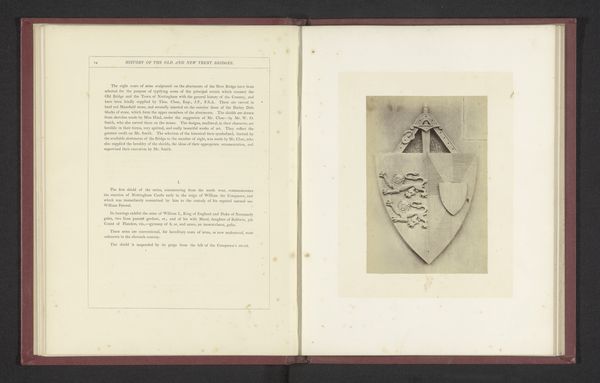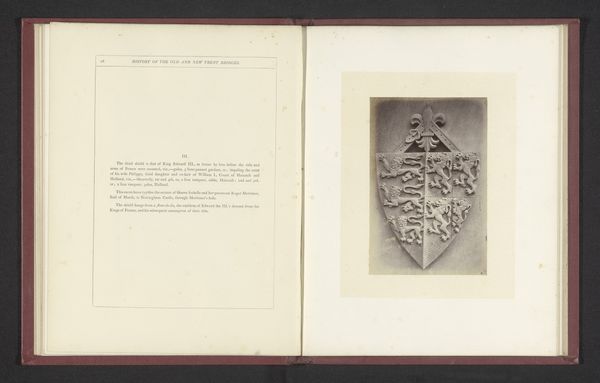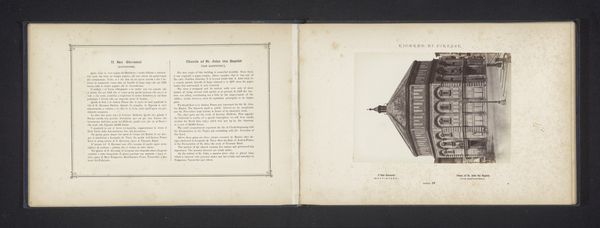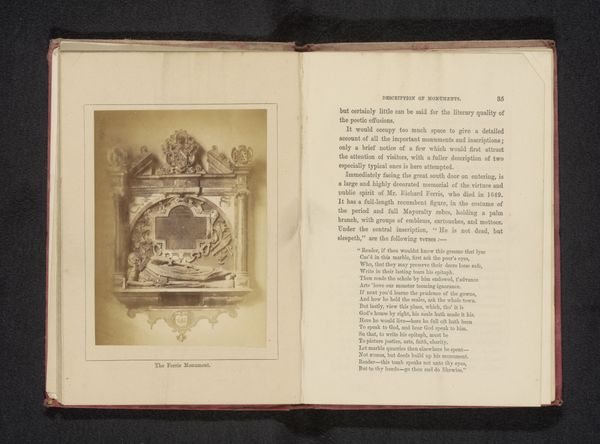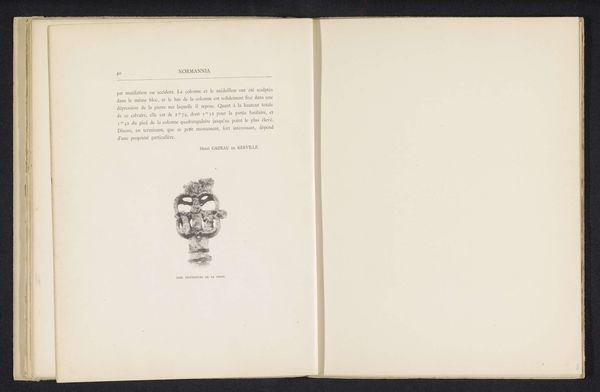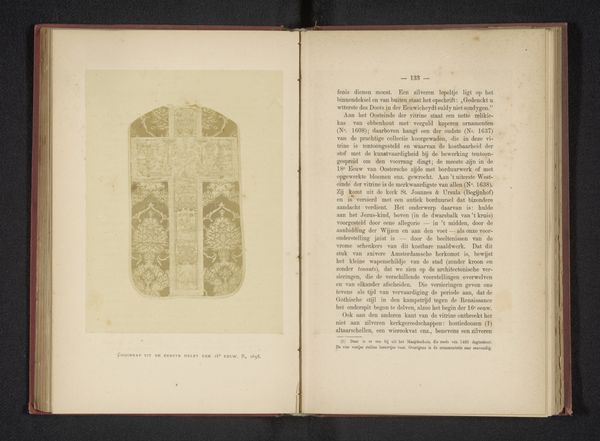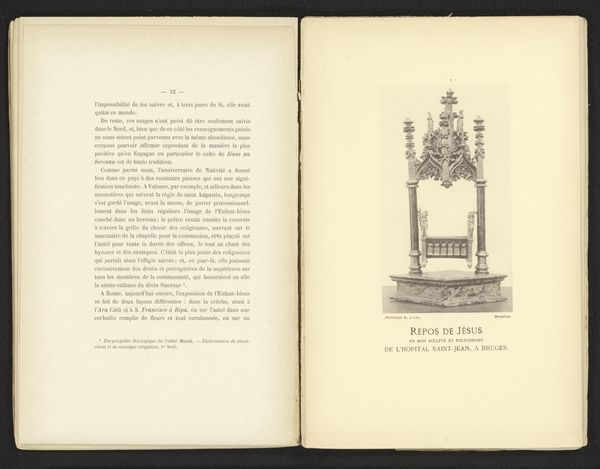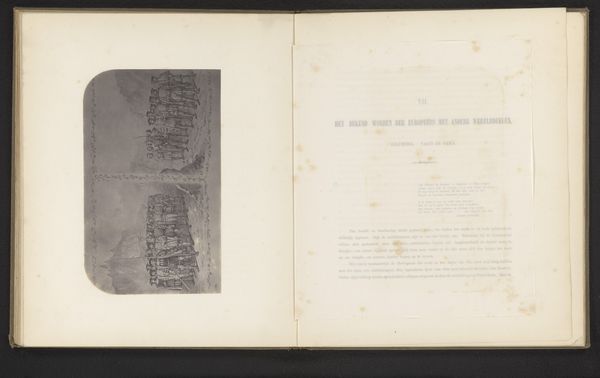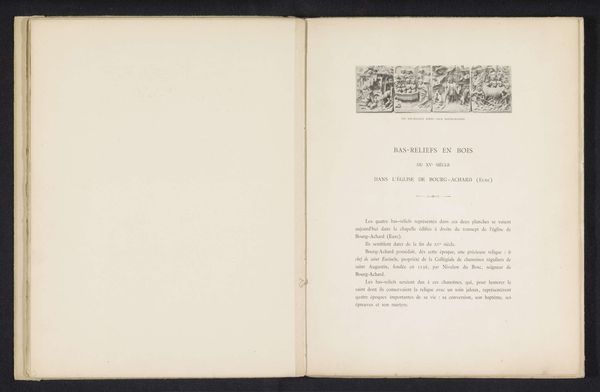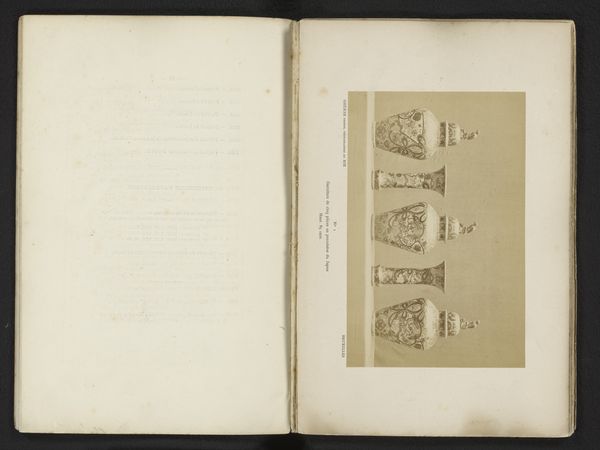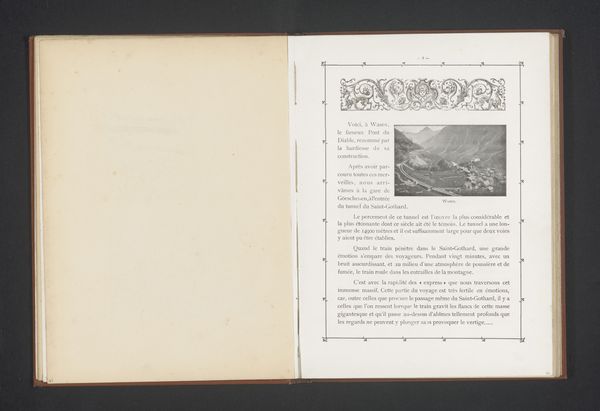
Wapenschild met de tekens van Richard III van Engeland en zijn vrouw op de Trent Bridge in Nottingham 1871
0:00
0:00
print, photography
#
medieval
# print
#
photography
#
neo-romanticism
#
history-painting
#
academic-art
#
realism
Dimensions: height 151 mm, width 102 mm
Copyright: Rijks Museum: Open Domain
This image captures an anonymous rendering of the coat of arms of Richard III of England and his wife, as it appeared on the Trent Bridge in Nottingham. The shield’s composition, divided into quadrants, immediately asserts a system of heraldic signs and symbols. Each section bears distinct motifs, from fleur-de-lis patterns to lions, meticulously arranged to convey lineage and power. The formal structure of the shield—its division and the arrangement of emblems—speaks to a deep investment in systems of meaning. These heraldic devices aren’t mere decoration, but function as a semiotic code. Each element acts as a signifier, pointing to specific noble lineages, territorial claims, and marital alliances. Consider how this structured arrangement challenges fixed meanings. By combining various symbols in a specific configuration, the artwork effectively constructs a narrative about Richard III's identity and reign. It invites us to decode the layered meanings embedded within its visual language. The shield itself functions as a cultural artifact that speaks to the ways in which power and identity are visually constructed and communicated.
Comments
No comments
Be the first to comment and join the conversation on the ultimate creative platform.
